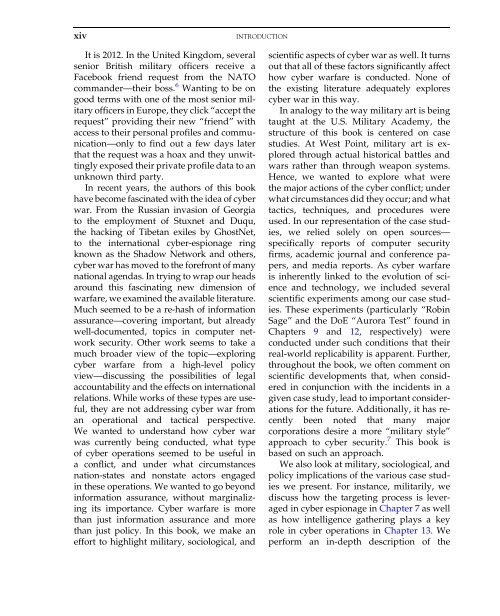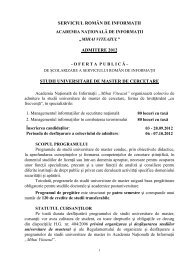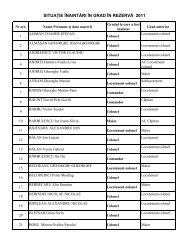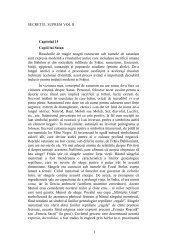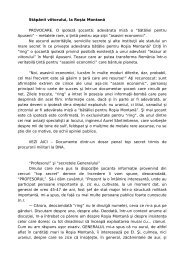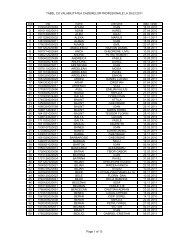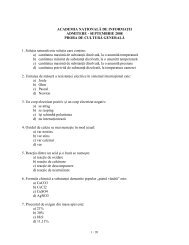Introduction to Cyber-Warfare - Proiect SEMPER FIDELIS
Introduction to Cyber-Warfare - Proiect SEMPER FIDELIS
Introduction to Cyber-Warfare - Proiect SEMPER FIDELIS
Create successful ePaper yourself
Turn your PDF publications into a flip-book with our unique Google optimized e-Paper software.
xivINTRODUCTIONIt is 2012. In the United Kingdom, severalsenior British military officers receive aFacebook friend request from the NATOcommander—their boss. 6 Wanting <strong>to</strong> be ongood terms with one of the most senior militaryofficers in Europe, they click “accept therequest” providing their new “friend” withaccess <strong>to</strong> their personal profiles and communication—only<strong>to</strong> find out a few days laterthat the request was a hoax and they unwittinglyexposed their private profile data <strong>to</strong> anunknown third party.In recent years, the authors of this bookhave become fascinated with the idea of cyberwar. From the Russian invasion of Georgia<strong>to</strong> the employment of Stuxnet and Duqu,the hacking of Tibetan exiles by GhostNet,<strong>to</strong> the international cyber-espionage ringknown as the Shadow Network and others,cyber war has moved <strong>to</strong> the forefront of manynational agendas. In trying <strong>to</strong> wrap our headsaround this fascinating new dimension ofwarfare, we examined the available literature.Much seemed <strong>to</strong> be a re-hash of informationassurance—covering important, but alreadywell-documented, <strong>to</strong>pics in computer networksecurity. Other work seems <strong>to</strong> take amuch broader view of the <strong>to</strong>pic—exploringcyber warfare from a high-level policyview—discussing the possibilities of legalaccountability and the effects on internationalrelations. While works of these types are useful,they are not addressing cyber war froman operational and tactical perspective.We wanted <strong>to</strong> understand how cyber warwas currently being conducted, what typeof cyber operations seemed <strong>to</strong> be useful ina conflict, and under what circumstancesnation-states and nonstate ac<strong>to</strong>rs engagedin these operations. We wanted <strong>to</strong> go beyondinformation assurance, without marginalizingits importance. <strong>Cyber</strong> warfare is morethan just information assurance and morethan just policy. In this book, we make aneffort <strong>to</strong> highlight military, sociological, andscientific aspects of cyber war as well. It turnsout that all of these fac<strong>to</strong>rs significantly affecthow cyber warfare is conducted. None ofthe existing literature adequately explorescyber war in this way.In analogy <strong>to</strong> the way military art is beingtaught at the U.S. Military Academy, thestructure of this book is centered on casestudies. At West Point, military art is exploredthrough actual his<strong>to</strong>rical battles andwars rather than through weapon systems.Hence, we wanted <strong>to</strong> explore what werethe major actions of the cyber conflict; underwhat circumstances did they occur; and whattactics, techniques, and procedures wereused. In our representation of the case studies,we relied solely on open sources—specifically reports of computer securityfirms, academic journal and conference papers,and media reports. As cyber warfareis inherently linked <strong>to</strong> the evolution of scienceand technology, we included severalscientific experiments among our case studies.These experiments (particularly “RobinSage” and the DoE “Aurora Test” found inChapters 9 and 12, respectively) wereconducted under such conditions that theirreal-world replicability is apparent. Further,throughout the book, we often comment onscientific developments that, when consideredin conjunction with the incidents in agiven case study, lead <strong>to</strong> important considerationsfor the future. Additionally, it has recentlybeen noted that many majorcorporations desire a more “military style”approach <strong>to</strong> cyber security. 7 This book isbased on such an approach.We also look at military, sociological, andpolicy implications of the various case studieswe present. For instance, militarily, wediscuss how the targeting process is leveragedin cyber espionage in Chapter 7 as wellas how intelligence gathering plays a keyrole in cyber operations in Chapter 13. Weperform an in-depth description of the


